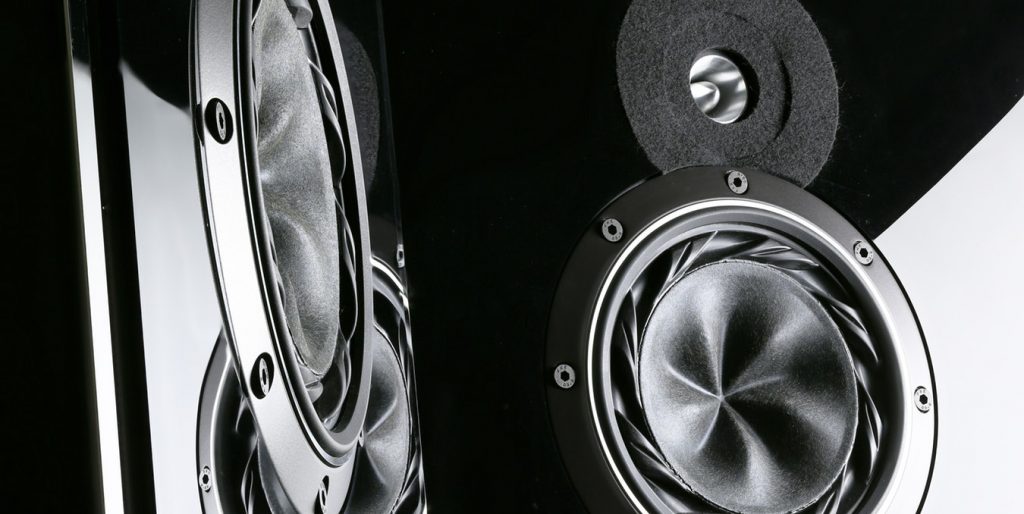How to Set An EQ and Tune Your Car Stereo

The Best Equalizer Settings – Learn How to Tune Your EQ and Car Stereo in Ottawa for Optimal Sound
When it comes to tuning your new car stereo and speakers, always trust your ears.
The bit of time you spend tuning your stereo is worth it for the quality sound you’ll get to enjoy after.
For optimal system performance and sound, consider these tips for tuning your car stereo in Ottawa.
Why Is Tuning Your Stereo Important?
Tuning your stereo makes a difference in sound. The difference is between okay sound quality and amazing sound.
Since you already put in the time and effort to upgrade your car stereo system, you may as well make the most of the new stereo and tune it up to its potential.
How Do Equalizers Work?
When set properly, your stereo’s equalizer (EQ) can bring the best sound out of your car stereo system.
Tuning the EQ improves your stereo’s sound reproduction by removing large peaks and dips between frequencies that create harsh, unpleasant sounds.
Basic EQs only have 3 bands of frequencies to work with, whereas more complex EQs may include 13 or more bands.
For example, a 3-band EQ represents 3 divisions of frequency for treble, mid, and bass tones. Bass frequencies are generally between 60 to 120 hertz, mids between 400 to 2,500 hertz, and treble between 8,000 to 15,000 hertz.
EQs with more bands offer a finer division of frequency groups (i.e. 13 instead of 3 divisions of frequency). This provides greater control over your stereo’s sound.
How Do I Set Up My EQ?
To set up your EQ, you need a real-time analyzer (RTA) tool to measure the sound in your car. You can easily download an RTA app on your smart phone. You’ll also need a pink noise generator, which many RTA apps include in their software.
Pink noise is the equal output of a wide range of frequencies, usually from around 20 hertz to 20,000 hertz. Play pink noise through your car stereo while running the RTA app, which will display a graph of frequencies. Because you’re analyzing pink noise, you shouldn’t have any significant gaps between each frequency, barring a gentle curve.
At most, you want a 3-dB difference between each, with the 32hz frequencies on the higher end of a curve, a mostly-level 120 to 4,000hz, and a gentle dip down between 8,000 and 16,000hz.
Check the corresponding frequencies on your EQ and make some adjustments. If you’ve got a multi-band EQ, this could mean some balancing and tweaking until you get an even reading on your RTA graph.
3-band EQs can be trickier because each control handles a larger range of frequencies. Adjusting external factors (subwoofer placement, gain, crossover, or bass boost on aftermarket amps) is a great place to start, but you will likely still need some fine-tuning.
If you still have gaps, select the control (bass, mid, treble/highs) closest to the frequency that needs adjusting and narrow the bandwidth. Even a basic head unit’s menu should give you an option to select the center frequency. This is the frequency your adjustment range centers on.
Try adjusting your EQ again to balance things out a bit more. 3-band EQs are trickier, but with some patience, you can tune out harsh frequencies and smooth out your sound.
Step-By-Step Stereo Tuning Tips
If your stereo head unit has advanced features, such as digital sound processing, automatic equalization, and time alignment, refer to the stereo’s owner’s manual when making adjustments.
Once you’re ready to tune your car stereo, get in the driver’s seat and follow these steps:
Step 1: Turn on Your Stereo
When tuning your stereo, make sure your car is parked. It goes without saying that this is not a job you should do while driving. Set aside some time to tune your stereo. It can be a fun experience, so there’s no need to rush through it.

Step 2: Play a Favourite Song
Play one of your favourite songs on the stereo, something you know inside and out.
It should also be a song that you don’t mind listening to over and over again, since you’re going to need a good reference point for tuning your stereo.
Also, make sure this song has sonic variety, with plenty of different sounds that include:
- High notes—brass, flutes, and cymbals
- Mid-range sounds—guitar, piano, and vocals
- Low notes—bass and drums
Step 3: Tune the Fade Control
Tune the stereo’s fade control until the music is only coming out of your front-most speakers. Next, adjust the left-right balance until you’ve got a sound you enjoy.
Make a note of these settings, either with a piece of paper or on your phone.
Now go the complete opposite with the fade control so sound’s only coming from your rear speakers. Once again, adjust the left-to-right balance until you are pleased with the sound and take note of this setting.
If the balance settings are the same for both the front and back speakers, that’s great. You can leave them as is. If not, you’ll have to compromise between the two different settings. Find a suitable balance for quality sound from both the front and rear speakers.
Once again, adjust the fade control all the way to the front. Then slowly turn up the rear volume with the fade control until the music has a satisfying depth, but still sounds like it’s coming from in front of you.
For head units that let you control tone differences between the front and rear speakers, tune the rear speakers so they have a little less treble than the front speakers. This helps the music sound like it’s coming from the front speakers, even when the volume is high.
Step 4: Set the Tone
Sit back and listen to the music for a moment. Are all the notes present—high, mid-range, and low? Are the notes balanced?
Take note of what is wrong with the tone before making adjustments.
For stereos with EQ presets, such as equalizer sound booster, or equalizer and bass booster, test the presets to see if they make the music sound better. Fine-tune the sound with the bass, treble, and mid-range controls, and other EQ adjustments if needed.
Try different combinations of EQ presets, cuts, and bass and treble boosts until your music sounds just right.
The high notes should be clear but not piercing. The mid-range notes should be clear and smooth. And the bass should be full, but not loud booms.

Tuning Speakers and Eliminating Noise
A few adjustments to your speakers can also help improve your overall stereo system sound.
As with tuning your stereo, turn on one of your favourite songs and start making these adjustments.
Adjust Tweeters
Using tweeter mounts or wave guides, direct the tweeter’s high frequencies so they have a more direct path to your ears from the driver’s seat.
Try aiming the tweeters in different directions to find the best sound. Be sure to adjust the tweeter level settings on your component crossovers until you find the perfect sound.
Adjust Rear Fill
While your front speakers should give the best mid- and high-range frequencies, you should be hardly aware of your rear speakers. The rear speakers should add depth to the sound coming from the front speakers.
Adjust Subwoofer
If your stereo or amp has a built-in crossover, set the high-pass filters for your front speakers to the lowest frequency your speakers can handle. Then raise the crossover point until you hear the bass notes clearly, but they still sound like they’re coming from in front of you.
Noise Dampening
Noise dampening materials, like a Dynamat, can improve your stereo systems overall sound.
A Dynamat absorbs vibrations caused by speaker, vehicle, and road noise. Dynamats can also dampen rattling from a subwoofer for a tighter bass sound and less distortion.
Make the most of your new car stereo system with these tuning tips. And remember, always trust your ears since you will be tuning your car stereo to suit your music and sound preferences.
